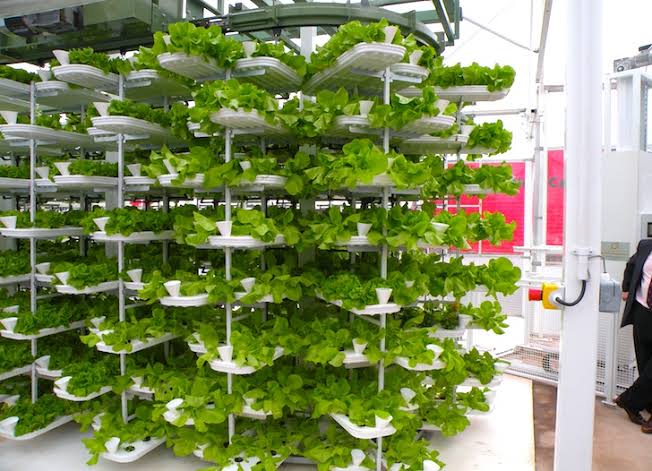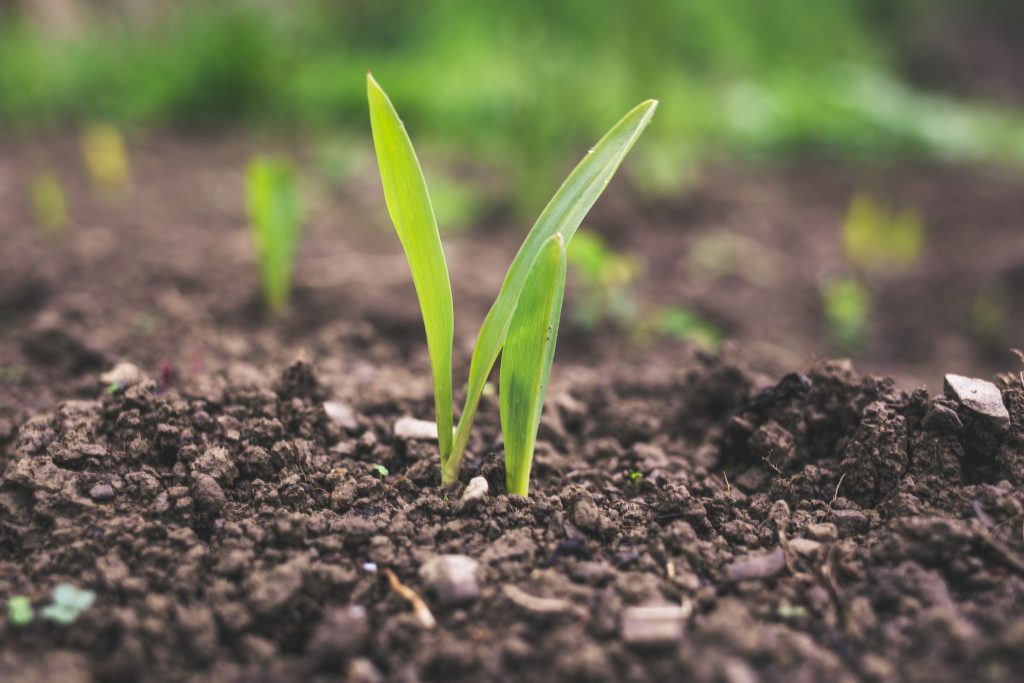What Is Vertical Farming?
Vertical farming is a modern agricultural practice which involves the growing of some specific crops in many layers vertically (one above the other), indoors, in greenhouses or underground.
This practice is done under artificial conditions of light, temperature, humidity and gases.
The major aim of vertical farming is to maximize productivity in smaller or limited spaces. Here, propagation is done with soil-less methods such as hydroponics, aquaponics and aeroponics .
In this farming system, less water is used, pesticides are close to unnecessary and being grown indoors, the crops aren’t seasonal as productivity is continous all year round.
This method produces foods in vertically staked layers commonly integrated into other structures like a skyscraper or shipping containers.
It uses indoor farming techniques and the control of light artificially, the control of temperature, humidity and gases makes producing food possible indoors.
How Vertical Farming Works
There are four critical areas in understanding how vertical farming works;
- Physical layout
- Lighting
- Growing medium
- Sustainability features
Firstly, the primary goal of vertical farming is producing more foods per square meter. To accomplish this goal, crops are cultivated in stacked layers in a tower life structure.
Secondly, a perfect combination of natural and artificial lights is used to maintain the perfect light level in the room. Technologies such as rotating beds are used to improve lighting efficiency.
Read also: Breeds of cattle
Thirdly, instead of soil, aeroponic, aquaponic or hydroponic growing mediums are used. Peat moss or coconut husk and similar non-soil mediums are very common in vertical farming.
Finally, the vertical farming method uses various sustainability features to offset the energy cost of farming. In fact, vertical farming uses 95% less water.
Vertical farming supports a variety of crops such as lettuces, most greens, tomatoes, peppers and some vegetables like carrots, cucumbers, green peas etc.

Why Vertical Farming?
Vertical farming is born out of necessity because most traditional farmers are ageing and lots of persons are migrating from rural to urban areas.
Due to industrial development and urbanization , we are losing arable lands every day. In 2015, scientists reported that the Earth had lost a third of its arable lands over the previous 40 years.
We really do not know how much more we have left.
Its unfortunate this farming system supports only a pinch of all the crop varieties that are there in the world. You can’t grow maize or cassava under this system.
Increasing food demand due to a growing population along with ever decreasing arable lands poses one of the greatest challenges facing us. So the reason for this practice.
Advantages Of Vertical Farming
Vertical farming looks really promising and sounds like something of the future. Let’s look at some of it’s advantages.
- It promises to increase food supply without using more lands. It would reduce the amount of farmland needed for food.
- This practice ensures food security.
- Extension of growing season/no growing season as food can be grown all year round.
- Pest and diseases infestation is almost completely ruled out as plants are grown in an enclosed environment, leading to products without blemish.
- There is higher yield per unit of floor space as plants are stacked vertically.
- There is control over growing conditions.
- Very active development environment for supporting technologies.
- Weather conditions do not affect plants as you do not have to worry about the amount of rainfall or sunlight or when best to plant your crops.
- Climate control.
Disadvantages Of Vertical Farming
- Vertical farming relies too much on technology and a day of power failure would be devastating.
- The farms are incredibly expensive to build especially in high-priced urban locations.
- High operational cost.
- A limited number of crops can be grown economically.
- Crops that are currently grown have a small caloric density.
- Very high demand of energy.
- Running a vertical farms requires a lot of sophisticated skills
- Pollination is very difficult
- The knowledge about this farming system is very small. A lot of people know about it, but knowledge for implementation is rare.
Vertical farms can fail
A common pitfall of many vertical farms is attempting to both grow food for market while productizing and selling the technology they’re using to grow their food.
New farmers must understand they have only one goal: Sell good food. Everything else comes second. The more time, attention, and money spent trying to productize the system, the less time a grower has to delight their customers with fresh, local food. The same goes with decisions about equipment used to accomplish this goal.
Unfortunately, we’ve seen dozens of hardworking farmers invest their time, energy, and financial resources into half-baked ideas that fail, taking their money and dreams of starting a farm down at the same time.
The bottom line is that farmers can either grow food or develop technology, but they shouldn’t do both. Attempting to do both ends poorly. Farmers wasting time on unproven systems or tinkering with their own tech instead of acquiring customers will ultimately end up out of business due to losing sight of their core objective which is selling good food.
Read also: How to control weed in lawns
Operational Challenges
Operations are a real challenge, and learning to manage them effectively takes time.
Where investors see these farms as factories filled with exponential technologies, operators have to deal with complex and varied business operations covering production, food safety, hiring & training, sales, and distribution.
The outside world sees shiny brands, cool tech, and delicious, fresh products; on the inside, these farms experience chaotic days and often much more wasted product than meets the eye in the first years of operation.
In some cases, farms struggle to pay back their investors simply because they are running incredibly complicated operations that take time and precision to scale.
Read also: Mixed farming
The Bottom Line
This technology is still very new, a lot of countries are just scraping the surfaces of vertical farming. Those that are really into it still get challenges and want to get better year in year out.
Despite it’s challenges and how expensive starting up can be, it is one of the best agricultural innovations of our time and should be advised.
There’s love in sharing.
